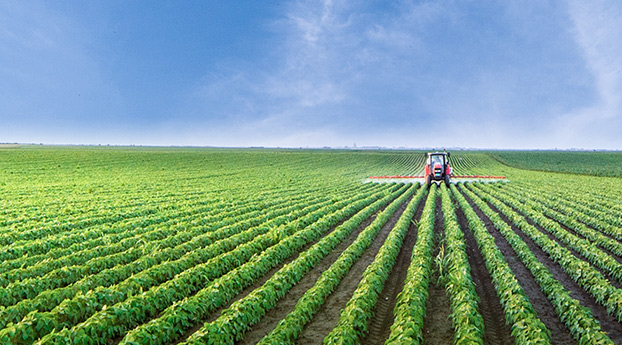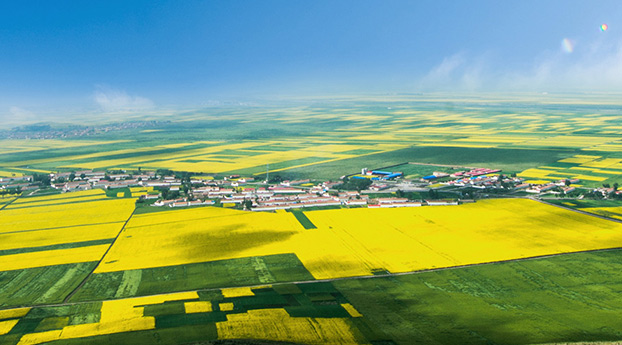Evaluation and Efficient utilization of farmland soil water resources
Release time:2015-02-13 Views:77
【作者】 绳莉丽;
【导师】 程伍群;
【作者基本信息】 河北农业大学 , 农业水土工程, 2014, 博士
【副题名】以保定平原为例
【摘要】 海河平原是我国农业生产基地和商品粮生产基地。水资源紧缺是制约该区域国民经济可持续发展的瓶颈。该区农业生产用水量占区域总用水量的70\%以上。能被农作物直接利用的水分形式是土壤水,而农田灌溉只是田间降雨形成的土壤水不足的补充。要缓解区域水资源紧缺状况,减少农业耗水、提高农田水分生产效率是关键,这必然要求区域的农业生产方式和农田结构形式应该按照“适水发展”的原则,与区域的土壤水资源状况相适应。因此进行区域土壤水资源评价和高效利用研究对于降低农业生产消耗传统水资源(重力水),缓解区域水资源供需矛盾具有重要的理论意义和现实意义。本文以保定平原为例,进行了农田土壤水资源评价与高效利用研究。主要研究内容与成果如下:(1)土壤水资源评价研究基本理论的分析与阐述。本文分析了土壤水资源与土壤水的关系、土壤水资源的概念和特性,阐述了土壤水资源的研究内容、评价指标和评价方法,明确了土壤水资源评价层概念和方法,运用水量平衡原理,提出了在地表产流上基于超渗产流模型计算,在评价层以下损失量上基于蓄满产流模型计算,在无效降雨上基于冠层截留模型计算的土壤水资源计算模型。(2)保定平原区土壤水资源数量评价。运用本文建立的土壤水资源评价模型,利用保定平原区雨量测站1956-2012年长系列降水量资料进行了频率分析,确定了代表年,得到了计算不同水文年的土壤水资源量的日降雨量;基于冠层截留模型计算无效降雨;基于超渗产流模型计算地表径流;基于蓄满产流模型计算评价层以下的入渗损失量;综合考虑土壤水资源形成过程中的损失量,利用逐日降雨量与逐日损失量和之差得到周年土壤水资源量;明确了保定平原区土壤水资源的时间分布特征和空间分布特征,为区域种植结构调整提高水资源利用效率奠定理论基础。(3)土壤水资源田间调控试验研究。针对河北保定平原区的自然降水特点,以具有显著节水增产效果的地膜覆盖技术为中心,通过棉花和花生覆膜的田间试验,研究了覆膜对田间土壤水资源量及其利用的影响。利用降雨前后棉田根系利用土层内土壤水的变化量计算降水量转化为土壤水资源量,明确了覆膜对土壤水资源补给增加的影响;采用水量平衡法计算了棉花各生育阶段的土壤水资源利用量,明确了覆膜对土壤水资源的消耗减少的影响;基于虚拟水的理论对覆膜的节水增产效果进行了评价,建立了同等产量条件下覆膜增加土壤水资源利用量评价模型。(4)土壤水资源高效利用调控体系。本文在分析保定平原区土壤水资源与主要农作物生育期需水的耦合特性的基础上,依据适水发展理论和田间试验调控效果,建立了以保定平原农田土壤水资源高效利用为核心的宏观作物层面调控措施体系和微观界面层面调控措施体系。
【Abstract】 Haihe River Plain is the production base of agriculture and commodity grain in china. Water resources shortage is a restrict to the sustainable development of the national economy in the area. The water use for the agricultural production accounts for 70\% of total water in the area. Soil water can be directly used in the crop growth, and the farmland irrigation water is only essential supplyment to the insufficient soil water recharged by precipitation, which cannot meet the crop water requirement. To alleviate the situation of shortage of regional water resources, the key is to reduce farmland water consumption and improve water production efficiency in agriculture, which demands the regional agricultural production and farm structure form should be in accordance with the "suitable water development" principle, to adapt to the situation of soil water resources of the area. Therefore research on soil water resources assessment and efficient uitilization has important theoretical and practical significance for the agricultural production to reduce consumption of traditional water resources(gravity water,) and to ease the contradiction between supply and demand of water resources in the area. In this paper, taking Baoding plain as an example, we have studied the soil water resource evaluation and high efficient utilization in farmland. The main study contents and results are as follows:(1) Analysis and description of basic theory research on soil water resources evaluation. The relationship between soil water resources and soil water and concept and characteristics of soil water resources has been analyzed. Research content, evaluation index and evaluation method of soil water resources have been explained. The concepts and methods about water resources evaluation layer are cleared. The model calculating the soil water resources quantity of Baoding plain is put forward in the light of water balance principle. This model focuses upon the following problems: firstly, in order to calculate the surface flow that does not produce soil water, the hydrological model of runoff yield in excess of infiltration is applied; secondly, the hydrological model of runoff yield at natural storage is used to calculate the water quantity of infiltration out of the assessment layer that recharge water amounts to underneath the assessment layer; and thirdly, the canopy interception model is utilized to measure the ineffective rainfall.(2) Study on quantity evaluation of soil water resources in Baoding plain. The model of soil water resources evaluation has been applied to calculate the soil water resources in Baoding region. The model needs the following different parameters, such as the daily precipitation, based on the rainfall of different hydrological years in Baoding plain, determined by the precipitation frequency according to 1956-2012 years of precipitation record series of rainfall stations in Baoding plain; invalid rainfall, calculated by canopy interception model; surface runoff, based on runoff over infiltration model; and water amounts of underneath the assessment layer, based on the runoff yield model. Annual variation of soil water resources quantity is measured by the difference between the daily precipitation and above daily loss, and the soil water resources in Baoding plain is concluded. The temporal and spatial distributioan of soil water resources are cleared, which is the theoretical foundationt to adjust regional planting structure and improve water use efficiency.(3) Study on control experiments of Soil water resources in field. According to the characteristics of natural precipitation in Baoding plain, plastic mulch field experiment has been done to study the influence of plastic mulch on the soil water resources amount and utilization. First, the ratio from rainfall to soil water resources has been calculated by using the change of soil water contents in the soil layer of cotton root before and after rainfall, and the results indicate that the ratio of film mulching has been increased; second, the effect on soil water consumption is cleared on the base of water balance equation; third, the appraise model under the condition of same production is set up based on the theory of virtual water.(4) Study on regulation system of soil water resources utilization. According to the difference between the soil water resources amount and water requirement during the growth period of main crop, and in accordance with the "suitable water development" principle, soil water resources regulation system are put forward. Soil water resources regulation system includes the macroecosmic regulation and microcosmic regulation.
【关键词】 土壤水资源; 计算模型; 土壤水资源评价; 高效利用; 覆膜调控; 保定平原;
【Key words】 soil water resources; calculation model of soil water resources; soil water resources assessment; efficient utilization; plastic mulch regulation; Baoding plain;

















